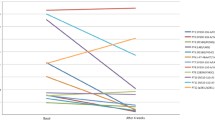Abstract
At the Kennedy Centre for Phenylketonuria, Denmark, large neutral amino acids (LNAAs) are being used to treat adult and adolescent patients who are nonadherent to dietary treatment for phenylketonuria (PKU). At the start of treatment, a patient must undergo dietary analysis and regular blood sampling to measure plasma amino acid (AA) concentrations. The aim of this analysis and treatment is that the patient receives 25–30% of the daily protein requirement from LNAA supplementation and the remaining 70–75% from natural, low-phenylalanine proteins (although some patients have difficulties in maintaining this level of protein intake). Patients are therefore able to follow a more “normal” diet than those adhering to a PKU diet with AA supplementation (in which only 20% of the daily protein requirement is provided from the diet and 80% from AA supplementation). LNAAs have also been used to treat older patients with untreated/late-diagnosed PKU who show profound intellectual, psychological, and behavioral impairments. Treatment with LNAAs has been shown to improve measures of concentration and awareness of external stimuli in some of these patients and thus enhance their socialization, emotionality, frustration tolerance, and mood.
Similar content being viewed by others
Abbreviations
- AA:
-
Amino acid
- LNAA:
-
Large neutral amino acid
- OMIM:
-
Online Mendelian Inheritance in Man (database)
- Phe:
-
Phenylalanine
- PKU:
-
Phenylketonuria
- t.i.d:
-
Three times a day
References
Andersen AE, Avins L (1976) Lowering brain phenylalanine levels by giving other large neutral amino acids. A new experimental therapeutic approach to phenylketonuria. Arch Neurol 33:684–686
Giovannini M, Verduci E, Salvatici E, Fiori L, Riva E (2007) Phenylketonuria: dietary and therapeutic challenges. J Inherit Metab Dis 30:145–152
Güttler F, Lou H (1986) Dietary problems of phenylketonuria: effect on CNS transmitters and their possible role in behaviour and neuropsychological function. J Inherit Metab Dis 9(Suppl 2):169–177
Güttler F, Wamberg E (1977) Fasting serum phenylalanine in untreated institutionalised patients with phenylketonuria. J Ment Defic Res 21:55–62
Kalkanoglu HS, Ahring KK, Sertkaya D et al (2005) Behavioural effects of phenylalanine-free amino acid tablet supplementation in intellectually disabled adults with untreated phenylketonuria. Acta Paediatr 94:1218–1222
Lou H (1985) Large doses of tryptophan and tyrosine as potential therapeutic alternative to dietary phenylalanine restriction in phenylketonuria. Lancet 2:150–151
Lou HC, Lykkelund C, Gerdes AM, Udesen H, Bruhn P (1987) Increased vigilance and dopamine synthesis by large doses of tyrosine or phenylalanine restriction in phenylketonuria. Acta Paediatr Scand 76:560–565
Matalon R, Michals-Matalon K, Bhatia G et al (2006) Large neutral amino acids in the treatment of phenylketonuria (PKU). J Inherit Metab Dis 29:732–738, FF
Pietz J, Kreis R, Rupp A et al (1999) Large neutral amino acids block phenylalanine transport into brain tissue in patients with phenylketonuria. J Clin Invest 103:1169–1178
Scriver CR (2007) The PAH gene, phenylketonuria, and a paradigm shift. Hum Mutat 28:831–845
Scriver CR, Kaufman S (2001) Hyperphenylalaninemia:phenylalanine hydroxylase deficiency. In: Scriver CR, Beaudet AL, Sly WS, Valle D (eds) Childs B, Kinzler KW, Vogelstein B (assoc. eds) The metabolic and molecular bases of inherited disease. McGraw-Hill, New York, Chap. 77, pp 1667–1705
Smith QR, Momma S, Aoyagi M, Rapoport SI (1987) Kinetics of neutral amino acid transport across the blood-brain barrier. J Neurochem 49:1651–1658
Acknowledgements
The author takes full responsibility for the content of this article but thanks Caudex Medical (supported by Serono Symposia International Foundation) for their assistance in preparing the initial draft and collating the comments of the author and any other named contributors.
Author information
Authors and Affiliations
Corresponding author
Additional information
Communicated by: Nenad Blau
References to electronic database: OMIM
Competing interest: None declared.
Rights and permissions
About this article
Cite this article
Ahring, K.K. Large neutral amino acids in daily practice. J Inherit Metab Dis 33 (Suppl 3), 187–190 (2010). https://doi.org/10.1007/s10545-010-9069-7
Received:
Revised:
Accepted:
Published:
Issue Date:
DOI: https://doi.org/10.1007/s10545-010-9069-7




